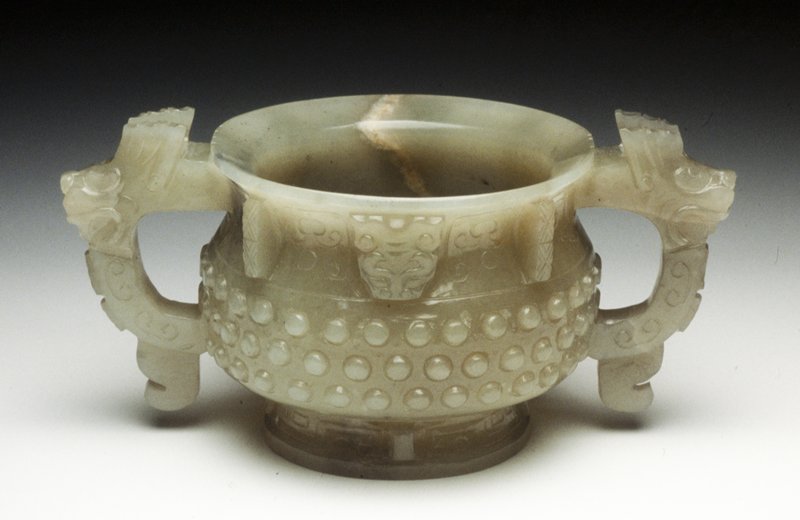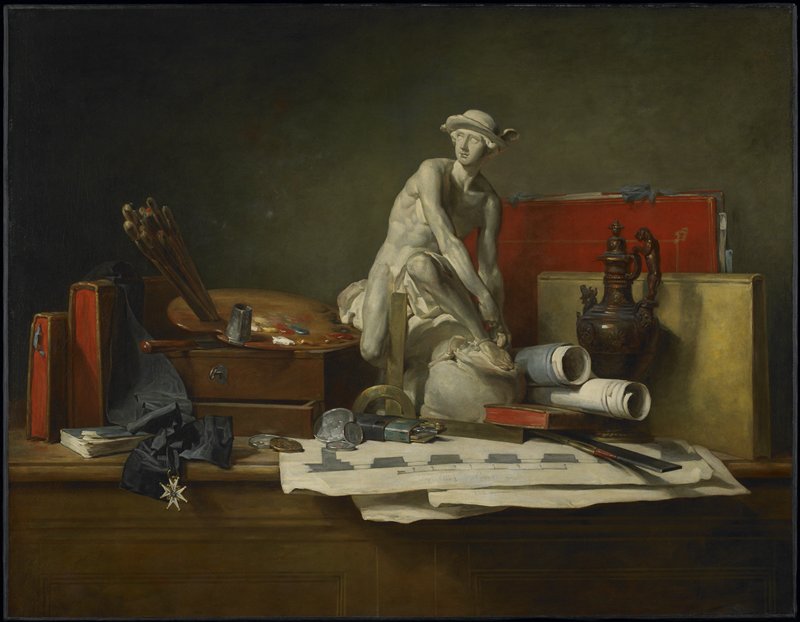The first rule of writing about art, whether you’re writing a gallery label, an audio script or copy for a Web site is: If you can’t see it, don’t say it. Never write about what the reader cannot see. At first this might seem too restrictive, but give it some thought. You’d be surprised what can be seen after all. Take a look at this former didactic label from the Minneapolis Institute of Arts:
|
Jean-Baptiste-Siméon Chardin J. B. S. Chardin, born in Paris, had his first art instruction from his father, a master cabinetmaker. In 1713, he began his academic training, and achieved his first recognition in 1726. He was elected a member of the Académie Royale in 1728 and thereafter exhibited at the Paris Salons. He specialized in still life and genre and was championed by the encyclopedist Diderot.There are several extant versions of this subject, which features a plaster model of Pigalle’s famous work. The Hermitage painting is closely related to Minneapolis’s and has a provenance reaching back to Catherine II. It may well be the original Salon of 1769 work, though both pictures are signed and dated 1766. Neither should be confused with the Moscow canvas entitled Attributs des arts avec une tête de Mercure en plâtre, which shows a bust of Mercury, since this is not Pigalle’s Mercury but, instead, a cast of a famous antique portrayal of the messenger of the gods. Recent studies suggest that Minneapolis’s painting may in fact be a replica Chardin executed as a gift for Pigalle himself.[1] |
See what happens here? There’s hardly any point in looking at the picture at all. Here’s another label for this painting after the Minneapolis Institute of Arts applied the “If you can’t see it don’t say it” rule.
|
Jean-Baptiste-Siméon Chardin This picture may appear to reproduce the casual clutter of an 18th-century tabletop. Not so: Chardin carefully selected objects to convey specific meanings.A palette with brushes, placed atop a paint box, symbolizes the art of painting. Building plans, spread beneath drafting and surveying tools, represent architecture. An ornate bronze pitcher alludes to goldsmithing, and the red portfolio symbolizes drawing. The plaster model of J. B. Pigalle’s Mercury, an actual work by a friend of Chardin’s, stands for sculpture.The cross on a ribbon is the Order of St. Michael, the highest honor an artist could then receive. Pigalle was the first sculptor to win it. So this painting sends multiple messages: it presents emblems of the arts and of artists’ glory and honors a specific artist, Pigalle.[2] |
Here’s another example that works, about a sculptural object from a different culture:
 Chinese ChineseBowl, 18th century Nephrite The John R. Van Derlip Fund and gift of the Thomas Barlow Walker Foundation 92.103.12 The Minneapolis Institute of ArtsThe form of this little bowl is based on a bronze food vessel used in ceremonies in ancient China. It was especially appealing for18th-century Chinese scholars interested in studying antiques and collecting old objects, just as many of us are today. The owner of this bowl probably used it as a water container on a writing table in his study, displaying his appreciation of China’s past.The subtle color, called “mutton fat” in Chinese, was preferred by 18th century collectors to the brilliant green and white colors of jade. (Fictitious label, based on Interpretation at The Minneapolis Institute of Art)[3] |
Notice that the label tells us Chinese scholars loved this kind of bowl because it represented their interest in ancient China. That’s an example of using the label to say something about who might have owned a work of art, while sticking with what visitors can see: “It (this bowl) was especially appealing for 18th-century Chinese scholars…” The last sentence gets readers looking again at the bowl to examine its color.
There is plenty of evidence out there that visitors don’t spend a lot of time reading labels in our galleries. But all the research that’s been done on this topic seldom answers this question: are the labels interesting? One of the biggest reasons I think visitors don’t read our labels is because there’s nothing written on them about what the visitor is trying to understand – the work of art that goes with the label.

